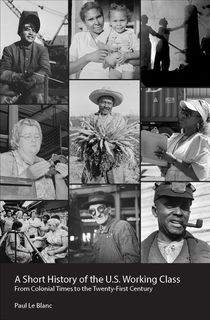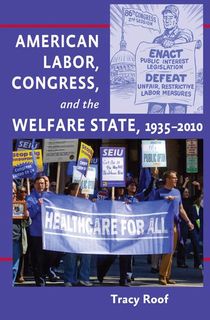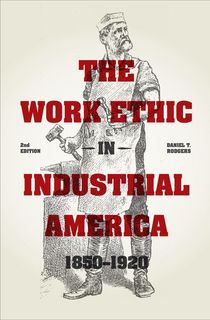In the United States and Canada, Labor Day is celebrated every year on the first Monday in September. More than 80 other countries around the world celebrate a similar holiday—International Workers’ Day—on May 1. While just about everyone in the U.S. knows that we get a three-day weekend come Labor Day, how much do you really know about the history of this holiday?
1. Labor Day began with the labor movement.
As the Industrial Revolution changed the American economy from a reliance on agriculture to factory work and manufacturing, many Americans were forced to work 12-hour days, seven days a week, while children as young as five years old worked in factories and mines. Not only were these workers (typically immigrants or deeply impoverished people) working longer hours and seasons than they would have on a farm, they also were forced into unsafe working conditions—the possibility of losing a hand or getting your hair trapped in a milling machine was high. People banded together to create labor unions that soon grew in power. Many years of strikes, protests, and boycotts allowed the unions to secure protections for workers, including the eight-hour work day—and your beloved weekend.
Related: The Best Travel Memoirs and History Books to Read Before (or During) Your Next Trip
2. The first Labor Day parade in the United States took place in New York City.

On September 5, 1882, the Knights of Labor and the Central Labor Union organized a public parade. More than 10,000 workers took unpaid time off work to march from City Hall to New York’s Union Square.
3. The first state to recognize Labor Day was Oregon.
While Labor Day may have gotten its start in New York City, the first state to pass a law officially recognizing the holiday was Oregon, in February of 1887. Four more states adopted Labor Day holidays that same year, with others following suit in the years that followed, although Labor Day would not become a federal holiday until 1894.
Related: 25 World History Books That Will Give You a New Perspective
4. We still don’t really know who came up with the idea of Labor Day.

Peter J. McGuire.
Photo Credit: Wikimedia CommonsSome claim that it was Matthew Maguire, then the secretary of New York’s Central Labor Union, who first suggested the idea of turning the first Monday of September into a holiday commemorating the success of the march on September 5, 1882. Others believe that the holiday was suggested by Peter J. McGuire (pictured above), vice president of the American Federation of Labor. McGuire would later claim that he proposed the date due to its ideal weather and its placement midway between the already-recognized holidays of Independence Day and Thanksgiving.
5. By the time it was recognized as a national holiday, Labor Day was already celebrated in most states.
On June 28, 1984, President Grover Cleveland signed Senate Bill S. 730 into law. This bill declared the first Monday in September a legal public holiday known as “Labor’s Holiday”. By this time, Labor Day was already celebrated in 30 of the 44 states then included in our union.
6. Labor Day was the seventh public holiday signed into law in the United States.
The first five federal holidays designated by Congress were Christmas, New Year’s Day, Independence Day, Thanksgiving, and George Washington’s Birthday (later combined with Abraham Lincoln’s to make Presidents’ Day). The sixth, added in 1888, was Decoration Day, which later became known as Memorial Day.
Related: Anna Jarvis and the Surprising History of Mother’s Day
7. We may owe Labor Day's widespread adoption to a Pullman train company boycott.

Pullman train car.
Photo Credit: Wikimedia CommonsIn May of 1894, employees of the Pullman Palace Car Company, makers of railway cars, went on strike to protest wage cuts and other abuses. In solidarity, the American Railroad Union called for a boycott on all Pullman railroad cars, a move that brought much of America’s railroad traffic to a halt—and in 1894, railroad traffic was a very big deal indeed. The government sent in the Army to break the strike, resulting in the deaths of thirty workers and property damage in excess of $80 million. The bill to recognize Labor Day as a public holiday had already been introduced to the Senate the previous year, but after the events of the Pullman strike and its aftermath, the bill quickly moved through both the Senate and the House to be signed into law.
8. Labor Day was almost celebrated on May 1.
The 1885 convention of the American Federation of Labor passed a resolution calling for the eight-hour workday which would go into effect on May 1, 1886. May 1 was suggested as a date for coordinated nationwide strikes to help push the resolution. May 1 also coincides with the European May Day celebration.
9. Ultimately, the May 1 date was abandoned for fear of socialist and anarchist movements.

President Grover Cleveland was concerned that placing the labor holiday on May 1 would remind workers of the bloody Haymarket riots, which took place on May 4, 1886 after police strikebreakers killed several workers striking for the eight-hour workday. Afraid that such a reminder would strengthen socialist and anarchist movements, Cleveland pushed for the September version of Labor Day. May 1 later became International Workers’ Day, celebrated in countries around the world.
10. Labor Day marks the unofficial end of summer in the United States.
In most states, the first day of school comes sometime near Labor Day weekend—in some places, Labor Day marks the first three-day weekend of the school year. Some states, such as Minnesota, have laws stipulating that the school year cannot begin until after Labor Day weekend, while in the state of Virginia such a law was actually enacted at the urging of the amusement park industry. As such, it has become the unofficial end of summer in much of the United States, when families enjoy the last gasp of their summer vacations.
Bonus: Why aren’t you supposed to wear white after Labor Day?
One thing that almost everyone knows about Labor Day is that you’re not supposed to wear white after it. What almost nobody knows, however, is why. In fact, it turns out that there may not be anyone who knows the reason for one of the world’s most well-known (and just as often flouted) fashion rules.
Most people in the know seem to agree on one thing: Wearing white in the summer was a means of staying cool during the hottest months of the year at a time when air conditioners hadn’t been invented yet. And for those who were wealthy enough to leave behind their city life to visit warmer climes, the white linen suits and Panama hats favored in resort towns became “a look of leisure,” according to Charlie Scheips, author of American Fashion.
With Labor Day marking the cultural end of the summer in the United States, these white-clad vacationers returned to their workaday life in the city, and with it their darker work clothing. “There used to be a much clearer sense of re-entry,” Valerie Steele, museum director at the Fashion Institute of Technology, told Time magazine. “You’re back in the city, back at school, back doing whatever you’re doing in the fall—and so you have a new wardrobe.”
How this pragmatic approach to summer and winter styles became a fashion rule seems to be anyone’s guess.
Featured photo of the Haymarket Square riot: Wikimedia Commons




